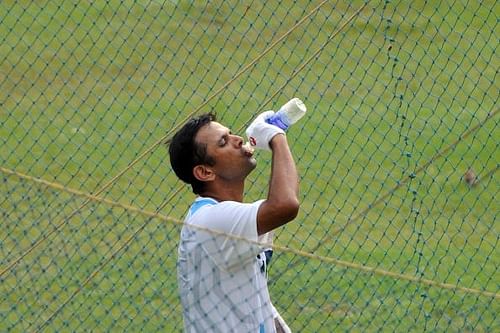
The unsung hero - Weathering the storm at Kolkata, 2001

All good things ought to end some time, they say. That’s what happened on 9th March 2012, the black Friday for Indian cricket. Rahul Sharad Dravid, the crisis man for India, decided to hang up his boots that day. His decision sent a tremor of shock, sorrow and most alarmingly, dread, not only through out India, but the world itself! India realized that it had not lost just an individual performer, but an exquisite era in which India rose to the apex of glory in Test cricket. All cricketing nations started respecting India, honouring its players and fearing a loss to India even in a home series on their own turfs. As Dravid said, he and some of his teammates took a legacy of Indian cricket forward. In my opinion, they did not just take it forward, but gave it a new recognition, a new grandeur.
The commencement of this golden era was roughly during 2001, when India registered a historic win against Australia at the beautiful Eden Gardens. Forced to follow on chasing a mammoth total of 445, and after being reduced to 232-4, India bounced back to surprise the entire world by turning out to be victorious in this critical match. The architects of this victory were V.V.S. Laxman and Rahul Dravid. Cultivating a mind boggling partnership of 376 between them, they managed to turn the tide of the game by crushing the deadly Oz attack, and rejuvenating India’s chances of winning the game. With a master class 281, Laxman ensured that India had no further trouble in imprinting a golden win in the pages of history that was being written then. For this impeccable performance, he was awarded the ‘Man of the Match’ award which he rightly deserved.
But during all these celebrations, shouts of delight and frisks of happiness, the efforts of one man seemed to be totally forgotten. All praised Laxman’s skills, but forgot Dravid’s solid technique. They marveled at Laxman’s momentous feat, but failed to notice that it was Dravid’s selflessness that gave Laxman the green light to swap places with him and play at No.3, and that too with minimum fuss. All strongly acknowledged Laxman’s stamina, but could not notice the endurance with which Dravid could hold the other end up, even while burning with fever, to ensure nothing else but India’s success.
Laxman definitely deserved the credit that that he was bestowed with, no doubt, but in the process of admiring Laxman, RD’s momentous contribution to the match should not have been forgotten. He held the other end up, weathered the storm along with his capable partner at the other end, and changed the perception of the world towards Indian cricket. Both of them, one with his artistic strokes and the other with his technical perfection and deep powers of concentration, started to a write a new chapter for Indian cricket in that match, and also, for themselves.
Devendra Prabhudesai, the author of “The Nice Guy Who Finished First” writes,
“Harbhajan Singh with a record of 32 wickets in 3 Tests, was the toast of the nations as was Laxman, who had followed up on his ‘Kolkata Opus’ with scores of 65 and 66 at Chennai. The fans heaped accolades on Tendulkar, who had scored 125 at Chennai and taken three vital wickets at Kolkata, and of course Sourav Ganguly, who had inspired his team to outdo the Australians in every aspect- technical, mental and verbal. He had not allowed his poor form to affect his leadership skills.
Rahul had ended the series, a successful one for him, as an unsung hero. Of course, it wasn’t as if he wasn’t used to it.”